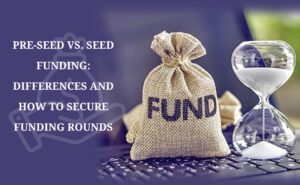What did two aspiring entrepreneurs do when they failed to get a taxi on time?
They Invented Uber!
When Garrett Camp and Travis Kalanik met for a conference in Paris, they both had no idea that the night would give them an idea of a lifetime that eventually would help millions of people worldwide.
Garrett had a crisp vision of solving the big taxi problem in San Francisco. Since It was a common problem most San Franciscans experienced. Hence Garrett’s business idea validation was just one step away since he had a big market need in front of him.
Initially, the idea was just establishing an accessible black car service that will help the citizens. But they both went on to expand their crystal clear vision worldwide. Now we all know what Uber is worth right now.
Investors look for a business idea that is early adopters.
Check our guide on how to pitch a business idea to get an investor’s perspective on pitching your idea.
Uber was definitely an early adopter they researched the market and saw there was a gap between supply and demand. There were idle cars and on the other side people were looking to get paid for their driving and boom Uber app was launched to change the life of millions of people worldwide.
In this post, we’ll take you on a short trip to show you the path of validating a new business idea, concept, or product. This is the first step for you to create a Great Business Model which is bound to get the attention of the Investors.
If you, like most desiring entrepreneurs, want to turn that idea into fortune, first validate your idea — prove it has worth; the process thereafter actually gets much easier.
Here is the ultimate guide you need that will take you through the whole process of validating the business idea with real-life business examples.
Testing your Idea
Testing the Business idea is as necessary as taking the ship in the ocean
Even if you small business and cannot afford to do costly studies, you do have the ability to run different tests in your app or on your website and see what works best”- Roger Dooley
With the idea in your head, what’s the next step?
Here’s what founders constantly think about:
“Try to figure out how to make it!”
“Figure out how to start small and make it big”
As Founder face questions like how many people want this product and will they spend enough on my product?
So why not test the idea first.
We usually assume that – if enough people wanted this product – We’d be able to figure out how to make it. You will be exposing your business idea to the marketplace and get some attention.
For example, you could end up paying thousands of dollars to build an expensive product that your customers may not even want, need or use.
Have you researched whether it has a market need? Because without market need the idea is worth nothing. Here are some real-life examples which show how important it is to validate Business ideas:
- Mayonnaise is already having a lot of demand and people enjoy it. But as it contains egg, Vegans were avoiding it, aftermarket research. Dr. Oetker Fun Foods Professional introduces Veg Mayonnaise in 2018. After all, food companies figure out ways to do this every day. So instead of a direct launch, they tested it and the product was definitely in demand.
- Have you thought that there is a certain process that takes time and you can solve it just in seconds? Contactless cards are now helping banks to solve such problems in few seconds. No dialing PINjust tap card on the POS machine and you are done. Investors are keen to spend money on products that are early adopters.
- Certain problems are big and hard to solve which proves to be costly. So is your idea solving such a problem? if yes you can charge loads of money.
- Companies were facing problems in storing data that was needed daily and boom Salesforce found a solution of CRM and though they charge loads of money for it. Now Salesforce is the most used CRM across the Globe.
- In 2011 HP Launched HP Touchpad to compete with the iPad. HP Touchpad failed to do better than iPad and did not have better specifications compared to iPad which made it just a simple touchpad like every other in the market.
- In 2009 NOOK was launched. It was an e-reader. As Amazon’s Kindle was already dominating the market. It was inexpensive and Kindle was easy to sync up with Amazon’s digital account. Hence NOOK never got the spotlight.
Many founders fall into the trap of solving problems and forget to get ideas validated. As we know market loves ambition but is not a delusion. Make sure you make optimum use of resources to produce products with real-world value.
We have reframed this chart with an extensive study on 150 startup founders how they achieved their 10x growth in the first 5 years of launching the product.
This chart is a process we used to use with our clients. But, remember that you will need to be dynamic because every business has different processes.
Market Validation Framework– Key Step to Gauge the Power of your Idea
The purpose of the market validation stage is to find the answers to the following important questions:
- Is there a market for the product as a result of your business idea?
- If there is a market, is it big enough?
- Are there people in the market who are starving for the solution to the problem your product will solve?
- Are they willing to pay for such a solution?
- If you successfully proved that you have enough big market, with potential customers that are starving for your solution and are willing to pay for it, your business idea has passed the market validation process. Now the second step is to focus on the Business idea validation process.
Business Idea Validation
With successful market validation, you can start the idea validation stage only if your previous market validation process proves that you have a market for your business idea.
Still, your solution is only in your head as a possible business idea. So currently you don’t have any product/service to offer to the market. Also, you haven’t built any solution to offer.
Validate ideas by interviews, brainstorming sessions. Discuss ideas with the end customer to get their point of view and match whether your solution is feasible for the problem they are facing.
At this business idea validation stage, you want to be sure that it is worth it to start spending time, money, and effort. So to go one step further to design and build your primary product we need product validation for the final take-off for a business idea.
Building an MVP
If your idea traveled to this stage, you are sure that there is a big market for your product/service. People are keen on the solution and willing to pay you. Till the idea validation stage, you are sure that there was enough interest for your potential product. Also, you want to ensure that people will buy from you.
Now what you need to do is to acquire early adopters for your MVP (Minimum viable product). Because founders need products to be launched with early features to satisfy customers and provide feedback for future product development. Also, investments are funded by those companies whose goal is to grow fast.
MVP is the smallest and first step you can make to start the validation of the product, it is also important to work on your MVP which will Include all desirable functionalities and specifications you have approved from the previous two Business idea validation stages. In such a way you can be able to prove or disprove your business idea to the investors.
You need to check all the information that you have collected from the two stages so that you can decide what features to include in your first MVP and what needs to contain your total offer as a whole for your business idea to investors.
As a founder, you can follow your vision. But as a businessman, you need to be creating products that people want to buy.
The Business idea product concept should be as visible as you can see fish in the aquarium. You must clarify what do you want to see as a final product.
- Problem Definition: Founders face scary thoughts like the world doesn’t require their product. Avoid such thoughts and be more feasible in forecasting the relevant problems that you can solve more efficiently and confidently.
- Customer definition: As you are starting to enter the market at first it’s impossible to capture the entire market. But gradually you surely would be there. To find out what geography to target. What did clients do? What is the turnover of the Client Company? Which industry? and so on.
- Define your unique way: Are you going to solve an old problem in a new way? Or vice versa. The focus should be only on providing value.
- Formulate Hypothesis: Consider your business idea as a set of Business hypotheses. A clear definition of the answer will ultimately land you on a decision whether the business idea is viable or not.
- Development of value proposition: List down what benefits can a user get from using your product compared to existing solutions in the market. Be sure to be simple and not time-consuming.
Don’t make your idea chase an investor rather make the investor choose your idea:
So how can I predict if an investor likes my idea?
See if you have holes and figure out what you need to do to prove your hypothesis, to make it happen.
Investors are interested in startups that can make returns quickly they are always channeling new startups because they know investing in a startup that has a unique and clear goal will make them loads of money.
The 3 Key Pointers
These 3 pointers help the founder to focus on the investor’s point of view.
Because investors know Startup = Growth.
Market: The idea which you are going to launch have you forecasted market growth? You must aim for a minimum of 20% Market growth.
Support in fundraising: A good idea that has been validated and has shown potential can bring investors via the incubator route. Most incubators run pilot surveys where the entrepreneur has to present his idea before investors to secure funding. With the survey, they forecast about investing and turn that start-up into the next big thing.
Shared resources: Sometimes incubator shares their resource which helps the startup in the faster realization of their business idea and land in the market.
The business idea in mind is as safe as a ship at the seashore. Take that Business idea and validate it into the market and start sailing. Go change the world!
Conclusion:
It is important to remember that idea validation doesn’t eliminate all the problems and it is just to journey. Still, it does prepare you for upcoming stages of how to get investment and how to make ideas turn into real-life products.
It is an effective way to minimize risks and save loads of money. Consider all the steps to make your business idea shine from a stack of ideas available in the market.
We know you have an amazing business idea. The key is to know how to vet business ideas. With our 5k+ investor’s network and access to 2000+ funds worldwide let’s get your business idea the required funding.








